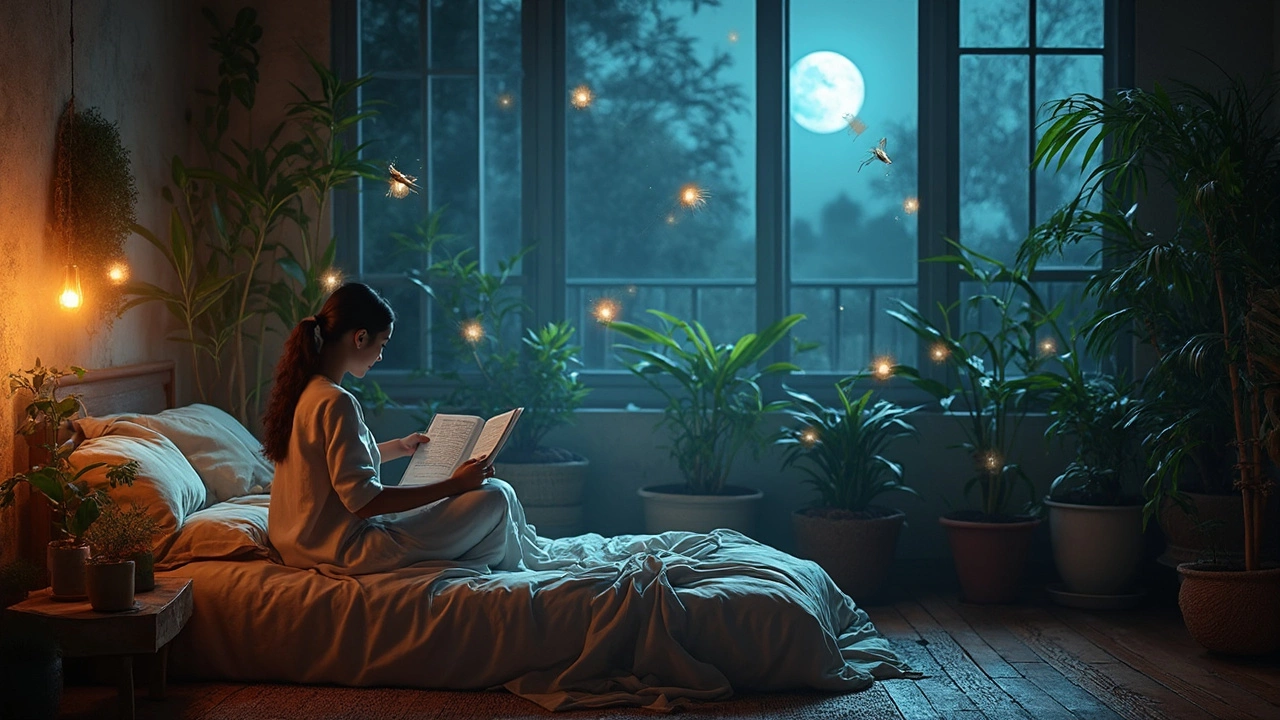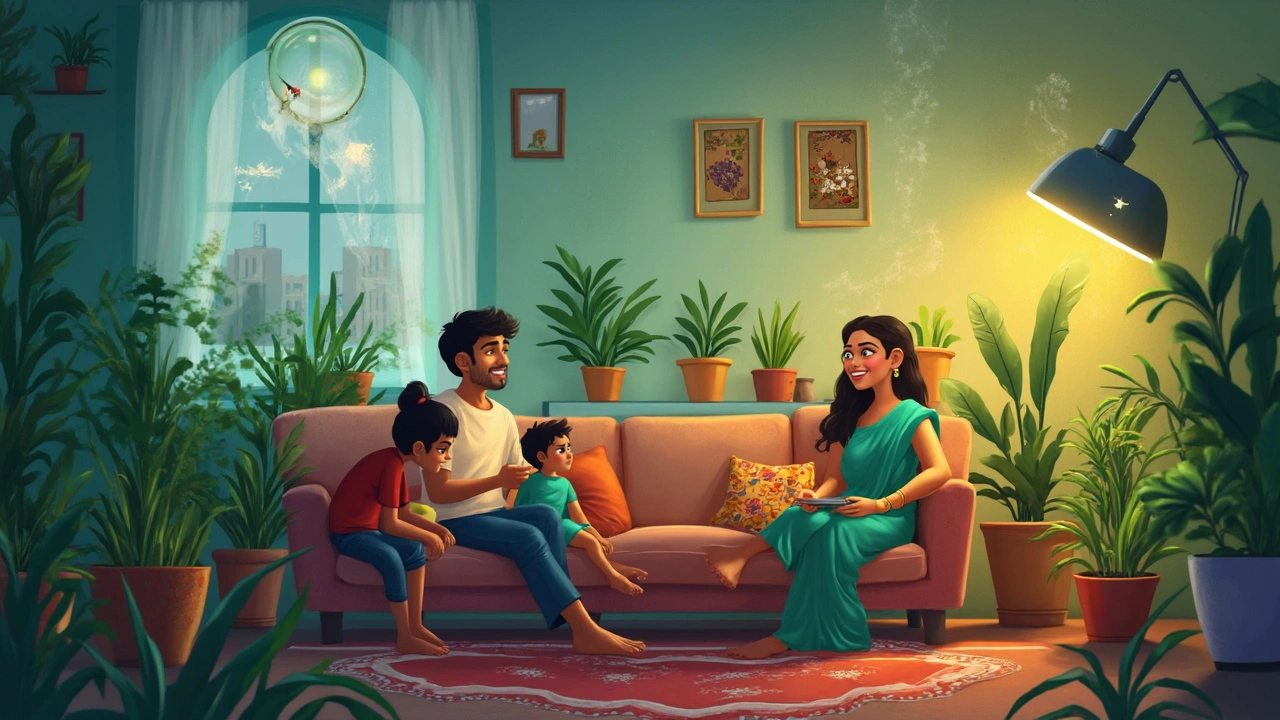Why Is It Not Good to Keep Potted Plants Indoors at Night?

Why Is It Not Good to Keep Potted Plants Indoors at Night?
Ever heard someone say you shouldn’t keep plants in your bedroom at night? It’s not just an old wives’ tale. When the sun goes down, your leafy friends actually flip the script on how they work. Plants need light for photosynthesis—that’s when they make oxygen and freshen up your space. But at night, it’s a different story: most stop making oxygen and start giving off carbon dioxide, just like people do when they breathe out.
One peace lily or pothos probably won’t make your room into a carbon dioxide chamber. Still, if you crowd a small bedroom with a bunch of big pots, you might notice the room feeling a little stuffier by morning. Your sleep could feel “off” if you’re extra sensitive to air quality. Plus, certain houseplants tend to trap humidity at night, which isn’t great if you’re trying to fight mold or keep dust mites away.
- How Plants Breathe: The Day vs. Night Shift
- The Air Quality Question: Is It Really That Bad?
- Risks You Didn’t Consider: Mold, Bugs, and Allergies
- Smart Tips for Nighttime Plant Lovers
How Plants Breathe: The Day vs. Night Shift
Here’s where things get interesting. During the day, most plants soak up sunlight and pull in carbon dioxide (CO2) through little openings on their leaves called stomata. This kicks off photosynthesis, which is when they turn that CO2 and sunlight into glucose for energy—and as a bonus, they pump out oxygen. That’s why it feels fresher in a room full of green friends while the sun’s up.
But when the sun sets, photosynthesis shuts down. The stomata often close up, and your indoor plants flip to plan B: respiration. Instead of taking in CO2 and giving out oxygen, they actually use oxygen and give off CO2. It’s pretty much the same process we do when we breathe. If you stack up a bunch of indoor plants in a small space, you might wake up to a less fresh room in the morning.
Here’s a quick look at what’s really happening in numbers:
| Process | Daytime Action | Nighttime Action |
|---|---|---|
| Photosynthesis | Pumps out oxygen | Inactive |
| Respiration | Minimal (plants use some oxygen too) | Uses oxygen, releases CO2 |
Surprisingly, some plants break the rules. A few desert plants (like snake plants and orchids) go through something called CAM photosynthesis. These guys actually soak up CO2 at night and store it for the next day. But most houseplants don’t work this way.
- Day: Most indoor plants clean the air and give off oxygen.
- Night: Most stop producing oxygen and might make your room feel a bit more stuffy, especially in tight spaces.
If you’ve ever woken up feeling a little groggy in a super plant-filled room, their night shift breathing might be why.
The Air Quality Question: Is It Really That Bad?
So, is your air at home going to get messed up just because you left a few indoor plants in the living room overnight? Here’s the straight-up answer: for most people, not really. But there’s more to unpack.
Plants need sunlight to make oxygen through photosynthesis, and when the light’s out, they flip to their backup routine—something called respiration. At night, most common houseplants take in oxygen and let out carbon dioxide. It’s totally normal, just the reverse of what they do during the day. The important thing is they produce a way smaller amount of CO2 than, say, a person or a pet.
If you’re cramming a small room full of big leafy plants and keeping the windows closed, carbon dioxide can add up a little more than usual overnight. Here’s some real-world context: a study from NASA looked at how much oxygen and CO2 plants pump out, and even with a handful of plants, the effect inside a typical bedroom is tiny compared to what humans exhale. So your biggest trouble with a plant-filled room is more likely to be moisture than gas build-up.
Quick data snapshot comparing CO2 production:
| Source | CO2 Produced Overnight (approx.) |
|---|---|
| One adult human | ~900g |
| One large houseplant | Less than 1g |
What could actually bother you, though? If your house has poor ventilation, things like stale air, mold, or a musty smell get worse when humidity from plants hangs in the air all night. If anyone at home has asthma or allergies, these changes might feel like a bigger deal because airborne mold and dust get extra active when it’s damp inside.
If you’re worried, open a window just a crack or run a small fan. This is usually enough to keep your air fresh no matter how many plants are around. If you want extra peace of mind, group your pots in rooms you don’t sleep in, or swap out especially thirsty or bushy plants for those known to help with air quality, like a snake plant or spider plant. Those are easier on air and require less fuss.

Risks You Didn’t Consider: Mold, Bugs, and Allergies
Everybody loves the idea of fresh air and a patch of green indoors, but potted plants bring some hidden risks that most people never really talk about—especially at night. First up: mold. When you water your indoor plants in the evening, the moisture sticks around longer since the sun isn’t there to help dry things out. That extra dampness in your pots and on leaves becomes a cozy home for mold and mildew. Mold spores are sneaky—they float around the room and can mess with your breathing, especially if you already get sniffly from allergies or asthma.
Bugs are another surprise visitor. Indoor plants, especially tropical varieties, can attract tiny gnats, spider mites, and even fungus gnats. They love moist soil, and if you can see gnats hovering or crawling on your pots at night, you’re not alone. These bugs multiply fast in wet dirt and love the warmer temps inside overnight. Here are some of the most common critters:
- Fungus gnats (tiny black flies around soil)
- Spider mites (webbing and tiny red or yellow spots on leaves)
- Mealybugs (white, cottony patches on stems or underside of leaves)
And let's not forget allergies. Nighttime is actually prime for allergens. With the windows closed and doors shut, any pollen or mold spores trapped in your bedroom just swirl around until morning. Some houseplants—even the popular ones like peace lilies or fiddle leaf figs—can release pollen or spores. If you wake up sneezing or with a scratchy throat more often, your indoor plant collection could be partly to blame.
The table below gives you a quick idea of how common these problems are at home:
| Risk | How Common at Home (%) | Who’s Most at Risk? |
|---|---|---|
| Mold Growth in Soil | Up to 70% | People with allergies or asthma |
| Fungus Gnats/Bugs | About 50% | Anyone with moist soil or overwatered pots |
| Allergy Triggers | Roughly 35% | Allergy-prone folks, kids |
If you want the green without the sneezy side effects, go easy on the watering, keep an eye out for pests, and try not to crowd too many indoor plants in your sleeping space. You’ll breathe easier—and probably sleep better, too.
Smart Tips for Nighttime Plant Lovers
If you love having a bunch of potted plants indoors, there are some easy ways to enjoy them at night without messing with your comfort or health. You don't have to get rid of your snake plant or hide your favorite monstera—just get a little smarter about where and how you keep them.
- Stick to one or two indoor plants in smaller bedrooms. More isn’t always better—especially overnight.
- Pick plants that release oxygen at night instead of carbon dioxide. Sansevieria (snake plant) and aloe vera are two good ones—studies from NASA’s Clean Air Study actually highlight these guys for their night-oxygen perks.
- Keep windows slightly open if you can. Letting fresh air move through the room helps swap out stale air, even if you’ve got a few plants hanging around.
- Check for mold in the soil and around pots every week. Too much water or bad drainage can crank up indoor humidity and make mold more likely.
- Wipe leaves with a damp cloth every so often. Dusty leaves block your plant’s ability to process air (and make your room look less fresh, let’s be real).
- Try using a small fan or dehumidifier in plant-heavy rooms, especially if you get allergies from mold.
Curious which plants play nice at night? Here’s a quick rundown of popular indoor species and what they’re up to while you’re sleeping:
| Plant Name | Releases Oxygen at Night? | Notes |
|---|---|---|
| Snake Plant (Sansevieria) | Yes | One of the best choices for bedrooms |
| Pothos | No | Purifies air by day only |
| Aloe Vera | Yes | Needs plenty of sunlight and good drainage |
| Peace Lily | No | Helps humidity but not recommended for allergies |
| Spider Plant | No | Easy care, but not an oxygen booster at night |
The bottom line? Rethink where you park your plant collection overnight, grab a couple of real air-cleaners (like the snake plant), and stay on top of plant care basics. Your sleep, your allergies, and even your plants will thank you.
About
Gardener Support India is your go-to online destination for expert advice on gardening and horticultural services in India. Whether you're a beginner or an experienced gardener, our platform offers extensive resources, tips, and support tailored to Indian climates and plant species. Explore a wide range of guides on plant care, sustainable gardening practices, and innovative gardening solutions. Connect with local experts to enhance your gardening experience and maintain a flourishing garden. Our dedicated services aim to empower Indian gardeners with the knowledge and tools needed for a successful gardening journey.
Latest Posts


Tips to Firm Up Loose Garden Soil: Expert Techniques
By Alden Thorne Dec 9, 2024

Common Indoor Plant Care Mistakes You Should Avoid
By Alden Thorne Jan 3, 2025

Best Liquids for Boosting Indoor Plant Growth
By Alden Thorne Dec 16, 2024

Write a comment